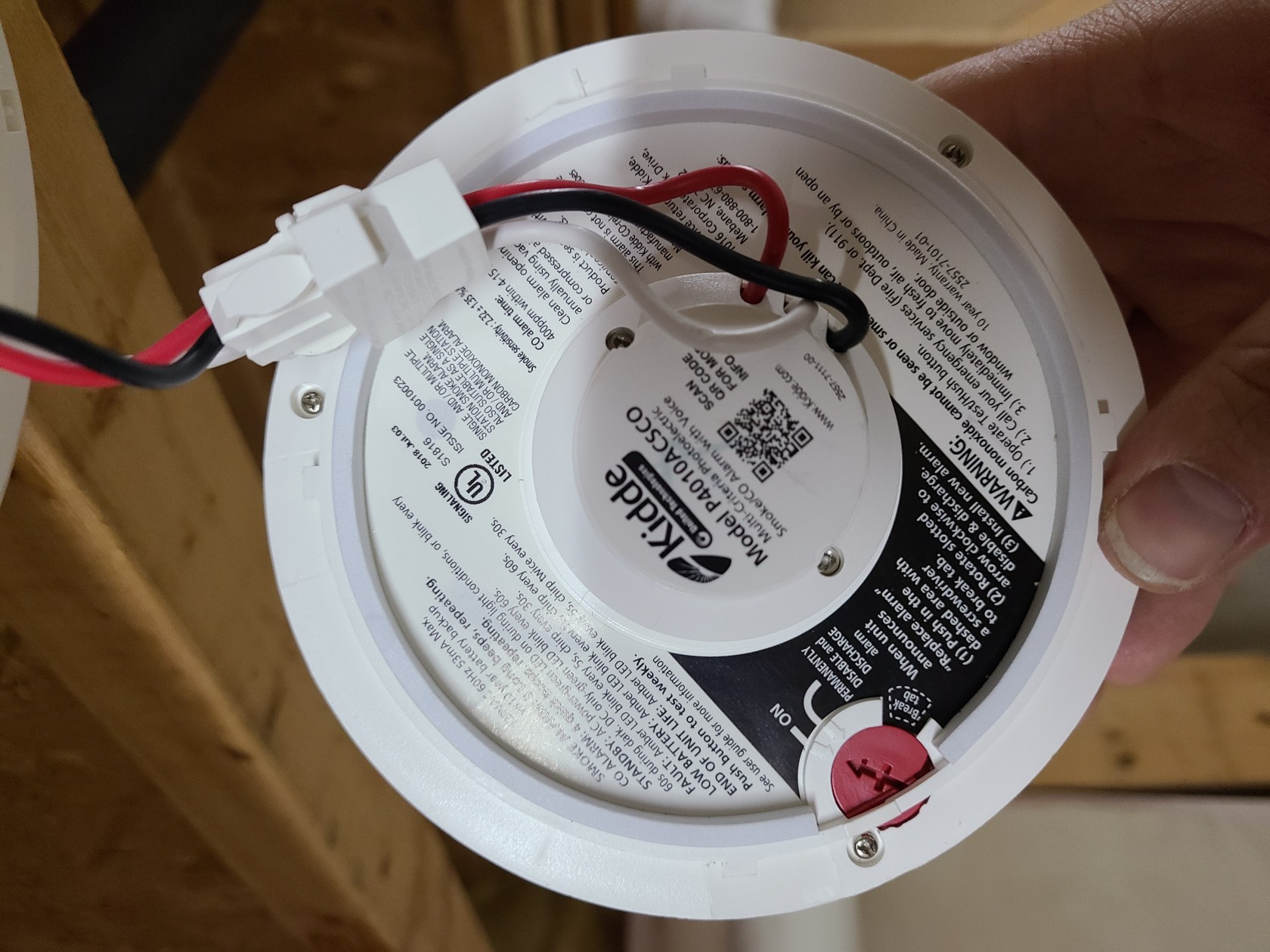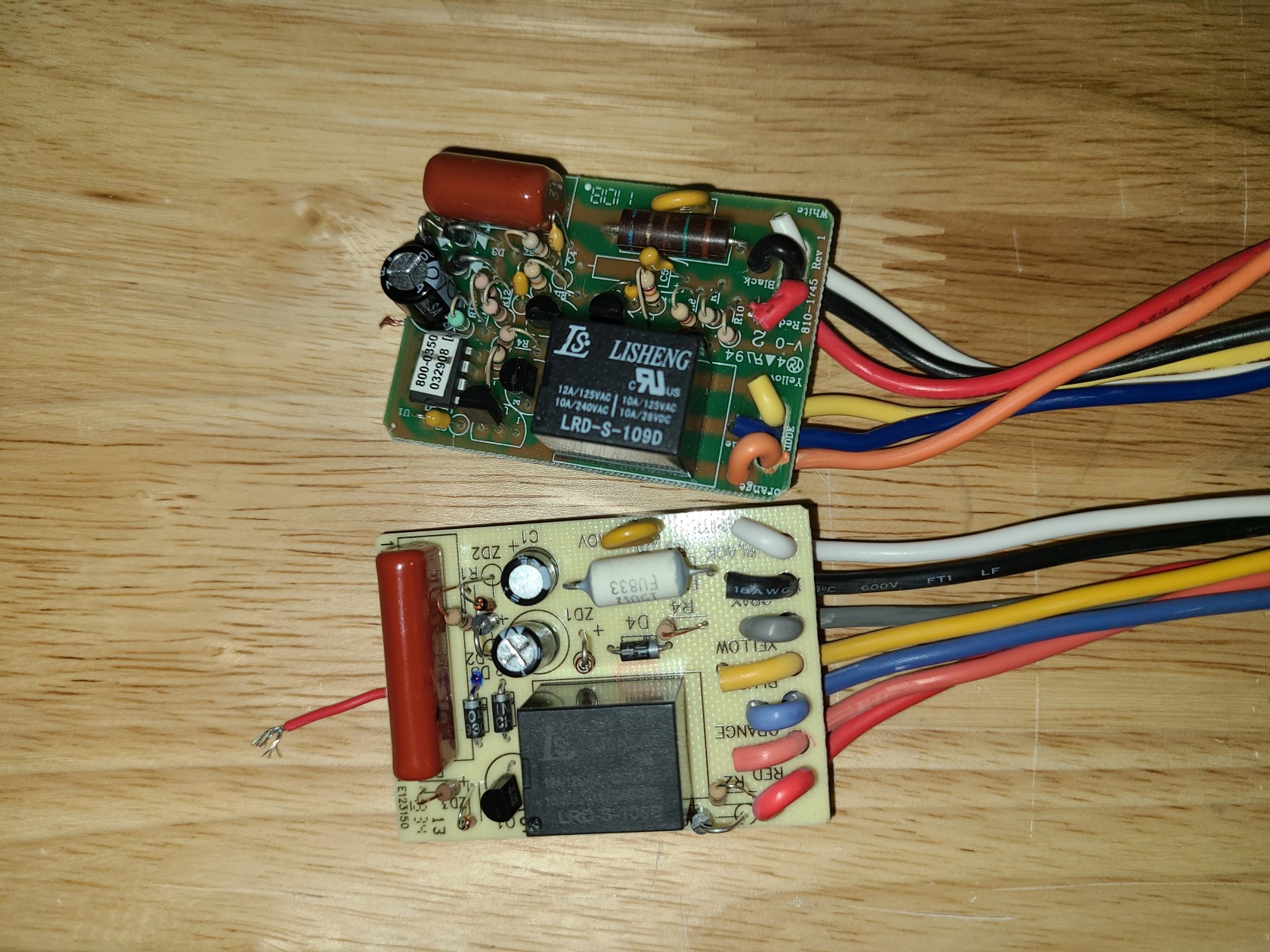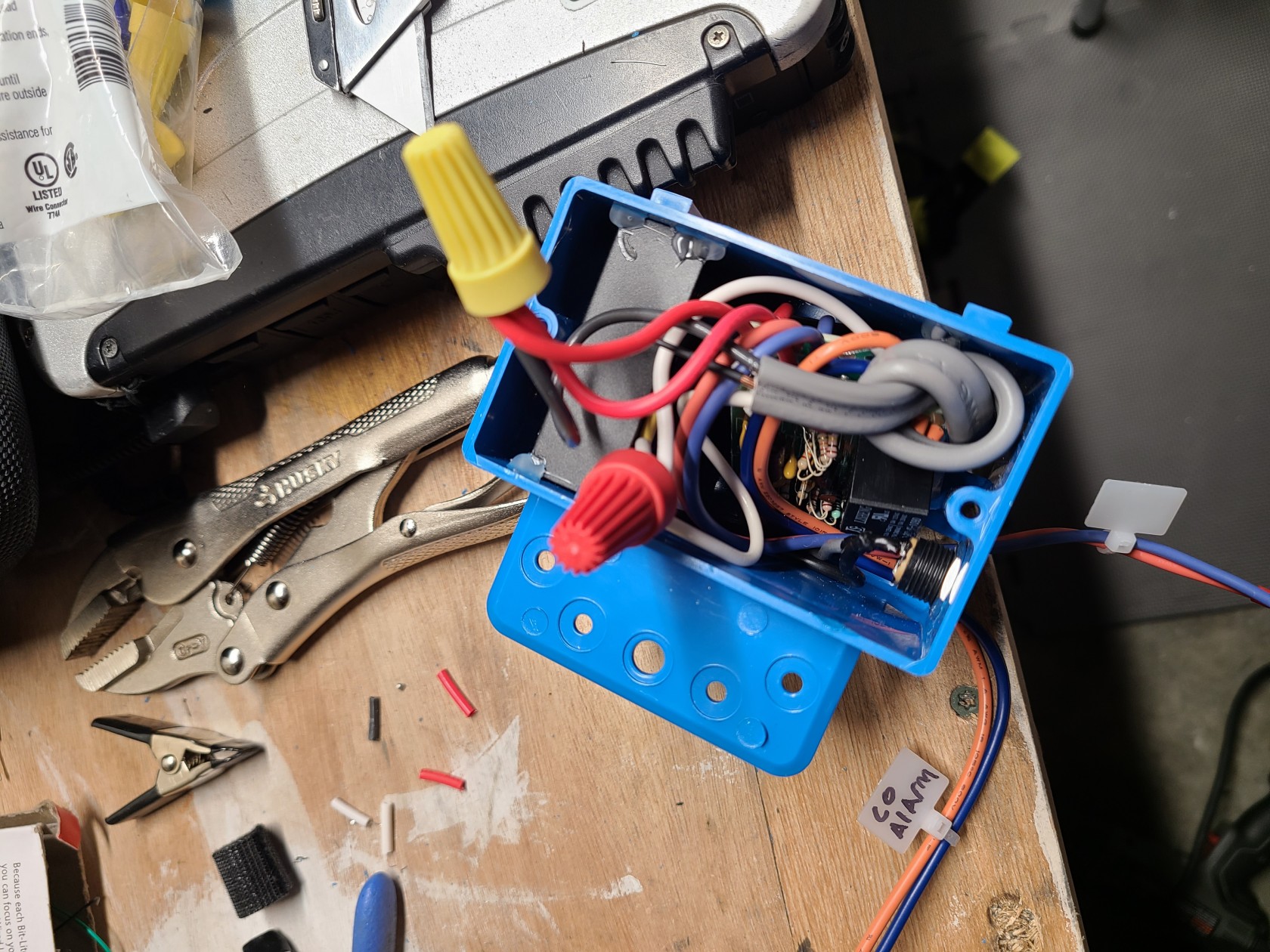The Boards
The goal is to have my phone buzz/get an email when the smoke alarms in the house go off. The alarms I have ar Kidde brand, dual smoke and CO detectors. All are wired on the same circuit with A/C power, and have a signal wire tying them together as well. I bought the Kidde interface boards, which tie into the 3 wire interface on the alarms, and toggle a relay when any of the detectors alarm.
[pictures of alarm P/N, and relay boards here]
The problem to solve is: these boards are AC power ONLY, there is no way to interface backup power except for an AC UPS, which is not practical to add to an entire circuit in my home, nor to a single low power device like these relay baords.
I took apart the relay boards (meaning I cut the shrink wrap off,) and this is what I found:
The boards are both powered via capacitive dropper circuits. A short and sweet explanation of a dropper circuit, is that capacitor is placed in series with the rectifying diode, and it essentially acts as a resistor to drop the voltage at the diode, but instead of burning the energy as heat, it is stored in the capacitor, and dumped back into the grid on the negative half of the AC wave. This also means that "ground" or 0V is the white AC neutral wire, the boards are in no way isolated from the mains voltage.
But what all that also means is that there is a DC power rail somewhere on these boards, and in the pictures above, there are test wires soldered to them. On a meter, the power consumtion was 26mA/31mA for the two boards (smoke/Co respectively) with relays active, and less than 5mA each when idle.
The DC rail voltage at the tap points varies wildy. At idle, the voltage is about 12.2V, but when the relays activate, that drops to 9.0-9.5V (Capacitive droppers are Very Stable, just the best...)
I decided that the best idea is to power the boards directly from an external 12VDC source, bypassing the dropper circuit. A proper DC source would be infinitely more stable than the dropper circuit on the boards, and would also benifit me safety-wise, as I would not have to bring the live 120Vkeeping line anywherevoltage near these DIY circuits, just neutral (0V) and the red signal wire from the alarms.
I installed the DC supply and two boards into an electrical box with a blank face plate. The DC output is tied to the 0V white wire, and the DC rail "tap" wire I added to both boards. I added a 12V DC barrel jack to the sideout of the box,box entirely, for safety reasons.
With this setup, the only wires running to the DCdetectors supplyare input,the neutral wire, and pulledlow thevoltage relaysignal contactwire. wiresThe outlive of120V oneis ofnever thebrought cable holes in the box. I ran a short length of Romex cable into another of the holes, and tied the red/white wires on the boards (0v/signal)close to the white/black leads in the cable (this runs to the nearby smoke alarm.)circuit.
The relaycontact wires ARE SAFE to handle with power applied, as these wires are run DIRECTLY to the NO/NC/COM contacts on the relay, and are idolatedisolated from the linerest power.of the circuit. There is no voltage on the wires (they are "dry contact" leads).


